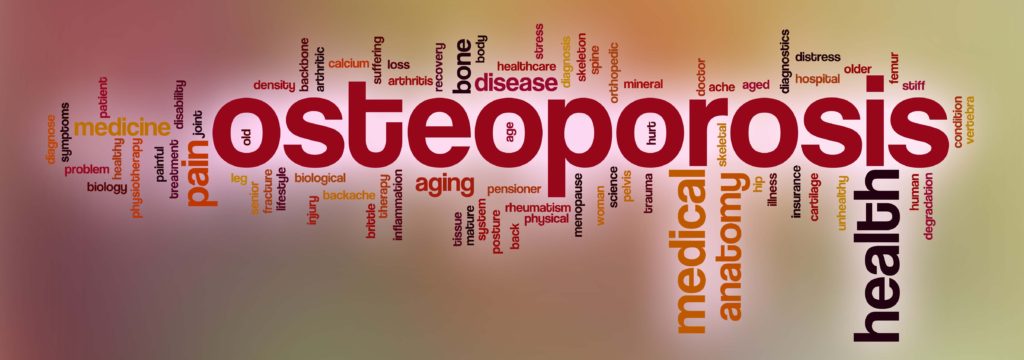Article
Do you feel general pain?, Injury Prevention
What is contentious, funny, serious, can be picked, has its own song named after it, and is only appreciated when broken? The answer: a 206 piece puzzle you carry around with you every day. Not only does it keep you from falling into a soft puddle of ooze on the floor, your bones also help form blood cells (red and white), store and release minerals, hold (and hide!) some triglycerides, and protect your brain and spine. When it comes to your bone health, osteoporosis is a chief concern to wrecking your source of stability. Here are key lifestyle changes that will reduce your risk for fractures, as well as a quick peek at the disease process itself.
What is osteoporosis? It all relates back to that mineral holding and releasing property mentioned earlier. If your body keeps stealing your bone minerals for other functions, the skeleton loses its density, causing bones to become more brittle, thereby increasing likelihood of fracture.
So where does this come from and who does it affect? Women are the strong favorites for osteoporosis, as well as the elderly. Other risk factors include: Family history, European or Asian descent, sedentary lifestyles, smoking, low calcium/Vitamin D intake, more than 2 drinks imbibed daily, as well as certain prescription medications which increase your risk. Granted, some of these risk factors can’t be helped. Changing your family history or age is truly impossible, despite our best efforts! However WE CAN focus on changing some lifestyle factors affecting the disease.
Medication may feel like the easy way out of bone compromise. There are generally two types of drugs: Antiresorptive drugs which slow down bone loss, and bone-building drugs, which promote increased bone mass. However some of these drugs can increase your risk of cancer, heart disease, and other side effects, warranting a discussion with your doctor before utilizing such medication.
A more natural option is focusing on mineral intake. Calcium and vitamin D are crucial in building bone mass. Calcium alone is difficult for the body to utilize without vitamin D. Once again speaking with a doctor or nutritionist is important in setting dietary goals and intake levels. Other dietary changes can include reducing alcohol consumption and ceasing smoking.
Finally, low impact exercises can be very beneficial in building bone mass. Walking, hiking, dancing, lifting weights, and biking are all excellent option to improve bone mass. However in cases of severe osteoporosis, low impact exercise, such as swimming, may be a better starting point. Talk to us, your local movement experts, for recommendations for a good exercise plan tailor-made to keep you happy and growing stronger! Here at HARTZ PT, we offer a Medically Adapted Gym (MAG) which is designed to customize your fitness goals with a supervising exercise physiologist. Our Better Bones, Better Balance Class is also designed to keep you on your feet and reduce injury and the fear of falling, allowing you to move with confidence.
No matter where you are in your bone health journey, let us help you stay healthy or improve your health with our exceptional therapy services, tailored gym work-outs, or focused balance classes. Remember, you have a lot of bones to keep in working order!


